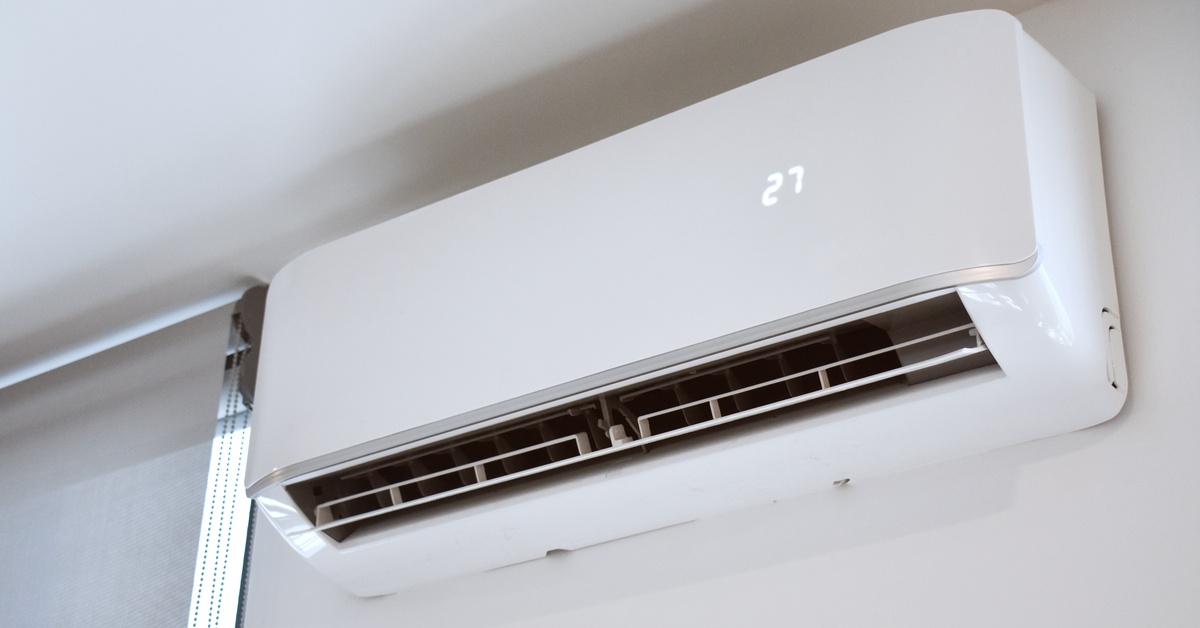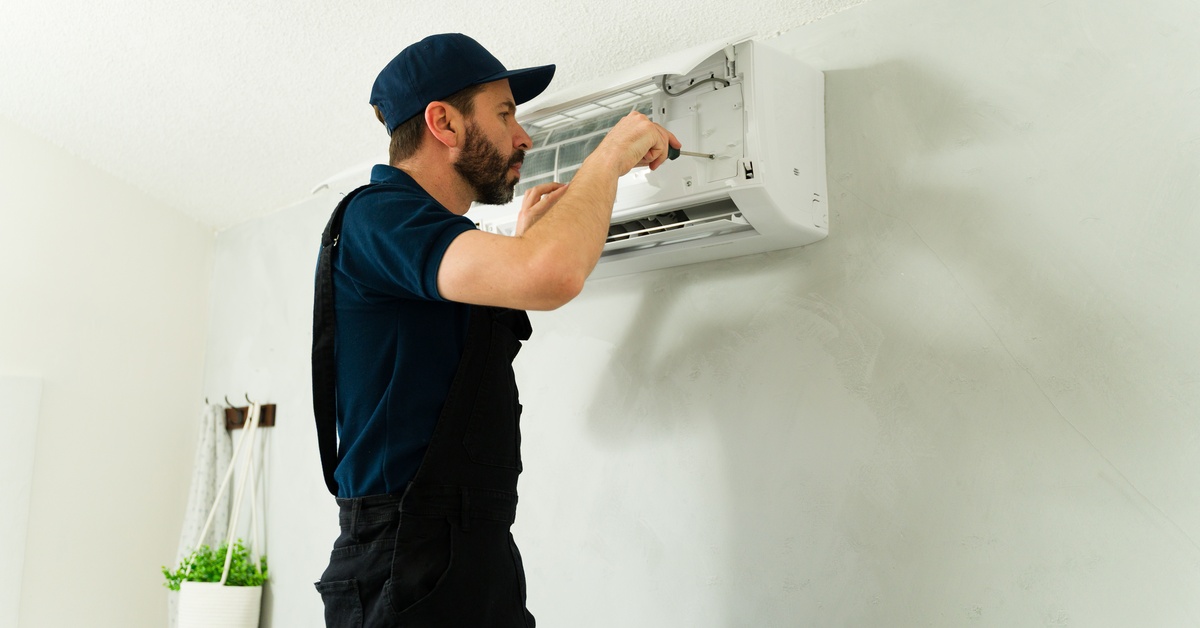A tax credit directly reduces the amount of income tax you owe, offering real savings rather than a deduction. Mini-splits are among the HVAC upgrades often eligible for tax credits since they localize cool air to a single space rather than wasting energy cooling the entire home. Find out what these systems are and how you can get a federal tax credit for mini-splits.
What Mini-Split Systems Are
Mini-split systems help you control your home’s temperature by focusing on a single room or area rather than the entire house the way a traditional central HVAC system would. Some homeowners install mini-splits alongside traditional systems to get extra climate control over certain rooms; however, they’re most common in spaces where installing a ducted system would be difficult or impossible.
Mini-splits use a refrigerant to absorb heat from inside the house and transfer it outside to cool your home down. These units connect an indoor unit to an outdoor compressor unit by a conduit containing refrigerant lines, power, and drainage pipes. Inside, the air handler unit delivers cool air directly into the room, allowing for targeted temperature control without ductwork.
Claiming the Tax Credit
You only qualify for a tax credit if you meet the efficiency standards set by the Department of Energy. These requirements often include a high SEER (seasonal energy efficiency ratio) and HSPF (heating seasonal performance factor) to reflect superior performance.
The first step in claiming a federal mini-split tax credit is thoroughly researching eligible products. You can only get a tax credit for your mini-split if you own a system that meets the qualifications. Before purchasing, always check the product’s description to determine whether the mini-split you buy meets these requirements.
Obtaining tax credits requires more than simply owning the appliance. You also need receipts and invoices to show proof of purchase and installation. You’ll also need the manufacturer’s certification statement to prove that the system you bought meets the federal criteria for efficiency and sustainability.
Eligibility conditions can also vary if you own multiple homes, as the IRS generally only awards tax credits to your primary residences. Tax credit laws can vary slightly for each state, so it’s best to talk to a tax accountant if you’re unsure.
Why Mini-Splits Earn Tax Credits

Now that we’ve explained that you can get federal tax credits for mini-splits in 2025, let’s dig deeper and explore why the government does this.
Energy Efficiency
Energy efficiency is one of the primary reasons mini-splits qualify for federal tax credits, since the government wants to promote energy-efficient appliance usage. These systems only provide targeted heating and cooling to specific areas, known as zones, rather than regulating the temperature of an entire house.
The product description should detail how many square feet each unit can effectively cool. To determine a room’s square footage, measure its length and width, then multiply the two. For example, if your living room is twelve by twenty feet, you’ll need a mini-split that can cool at least 240 square feet.
Environmental Impact
The positive environmental impact of having a mini-split goes hand in hand with the energy efficiency component. Traditional HVAC systems require high amounts of power because they have to bring air to every room in the house, and if you live in a multilevel home, it requires even more electricity. Not to mention, older systems can be harmful if their coolant leaks into the environment and emits greenhouse gases.
Mini-split systems, on the other hand, frequently utilize eco-friendly refrigerants designed to reduce greenhouse gas emissions. Additionally, because they consume less power, mini-splits indirectly help to decrease reliance on fossil fuel-based energy generation. This reduction in carbon footprint aligns with broader climate change initiatives and sustainability targets, making these systems relevant to governmental policies.
Reducing Energy Costs
One of the most appealing benefits of mini-splits is their ability to reduce monthly utility bills. These systems use electricity more efficiently than conventional HVAC setups by optimizing energy usage with advanced features for zoning and smart temperature control.
Over time, these energy savings result in significantly lower operating costs. Combined with the upfront reductions made possible by federal tax credits, mini-splits offer a highly cost-effective way for homeowners to achieve both immediate and long-term financial savings.
Tips for Buying a Mini-Split

Now that we’ve explored all the benefits surrounding mini-split tax credits, let’s discuss what you should look for when buying a system.
Know What You Need
Buying a mini-split that’s too small will not bring the cool air you want, and you may end up wasting more power turning on fans to circulate cool air. Measure every room and zone that you want the mini-split to cover to determine what setup you need.
Look for Reputable Sellers
As you shop for a mini-split, browse manufacturers with a reputation for quality systems. Some companies that sell HVAC systems also handle installation to ensure everything gets done properly so you can relax and feel cool in your home.
Find a mini-split installation companyby reading reviews, noting each company’s years of service and which licenses they have. Style Crest offers HVAC services and has over fifty years of experience helping homeowners make smart, sustainable choices for their comfort. Whether you’re ready to install a mini-split system or just need additional expert advice, our team is here to help every step of the way.
Maintain the Appliance
Taking care of an appliance ensures that it lasts for as long as possible. With mini-splits, basic maintenance includes regularly cleaning or replacing filters, wiping down the indoor unit, and keeping the outdoor compressor free of debris. You should also have an HVAC professional come out at least once a year to perform a routine check of the system so you can catch any potential issues as soon as possible.
Contact Style Crest Today
With rising energy costs and a growing emphasis on environmental responsibility, mini-split systems offer modern homeowners a practical and eco-conscious solution. Reach out to Style Crest today to discuss installing a mini-split system and take advantage of the benefits that come with it.